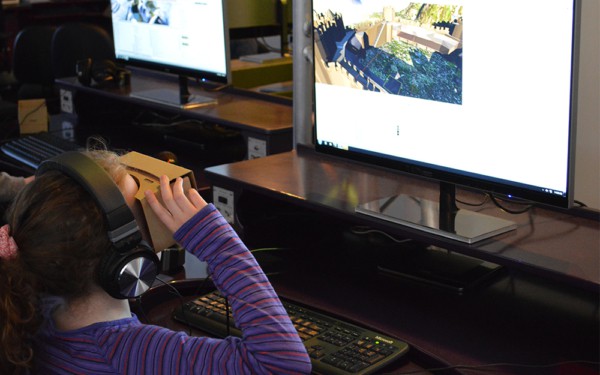
The Capital E Digital team like to keep an ear to the Matrix when it comes to new and interesting things in the world of technology. Two of our intrepid Digital Team crawled blinking from the warm darkness of our studios to attend the local AR/VR meetup at Projectr, Wellington’s new virtual and mixed reality firm, to share ideas with other digital producers and enthusiasts about where the Reality Industry is headed.
Reality Industry is a phrase we’ve just made up, but speaks to a long history of literature and cinema dabbling with the idea of escaping wholly into alternate realities, or adjusting and controlling the reality we see before us. From Total Recall to the Matrix to Inception, the idea that reality is a construct that can be recreated, reimagined and re-inhabited is a very seductive one, where we are free to choose the circumstances we encounter as “reality”.
Reality is defined as “The state of things as they actually exist”, so, with that in mind, what does Virtual Reality (*VR), Augmented Reality (*AR), or, may Morpheus guide us, Mixed Reality (*MR) mean?
Virtual Reality is designed to be an immersive environment, usually viewed through a headset such as the HTC Vive or Oculus Rift. In this headset, you are surrounded by a 360-degree world, all around you plus above and below. With high-quality VR, you can move around inside the world and interact with virtual items, picking things up (using handheld controllers), throwing them around, or shooting an arrow from your castle balustrade, painting a circle around your head with a blue rainbow using Tilt Brush – needless to say, virtual worlds can be unbelievable, and are excellent portals into a new world of creativity!
Not only that, but VR has implications far beyond entertainment, and can be https://creators.vice.com/en_au/article/jpv5ng/virtual-reality-doc-puts-you-inside-a-syrian-refugee-campused as a force of social good, allowing others to briefly inhabit unfamiliar realities. Recently, United Nations delegates watched a 360-degree video called Clouds Over Sidra, following a 12 year old called Sidra in the Za’atari refugee camp in Jordan, home to more than 84,000 Syrian refugees. By viewing her experience in Virtual Reality before entering a meeting to discuss the situation, the delegates are able to engage with the realities of what it looks, sounds and feels like to inhabit that place in a way that would be impossible to do physically. In this way, Virtual Reality ironically offers a deeper understanding of actual reality.
Augmented Reality, however, superimposes a computer-generated image in front of the real world, creating a composite of a dinosaur in front of your actual garden, for example. No doubt you remember the Pokemon Go! phenomenon that invigorated the imagination, but the future of AR is not all about chasing imaginary cartoon creatures around the city –AR is technology that has the ability to transform the way we work, such as the idea of surgeons being able to operate on a patient while having hands-free access to that patient’s notes, scans and other information, even to the point of being able to superimpose a scan of the patients heart over the actual heart while it is being operated on.
For a very different but no less super-cool application of AR, the Australian comic book artist Sutu (Stuart Campbell) collated the work of a group of artists working in AR in a book called Prosthetic Reality, for a demonstration see here.
Finally, Mixed Reality is like a cross breed of AR and VR, in which the real world is augmented by virtual elements that are designed to look as if they’re placed within the real-world environment, which may be interacted with.
In our Digital MediaLab, we are designing a VR learning programme using the Vive headset, in which students can build worlds inside this virtual reality, or paint in 360-degrees, or design and build games etc. In terms of the upcoming changes to the Digital Technologies Curriculum, this is one of the most fun ways to think about designing and developing digital outcomes. We’ve also experimented, as had many at the AR/VR meetup, with filming in 360-degrees, where the trick is to create a filmed scene in which the action transpires in every direction, and guiding the way the viewer to follows a particular action relies on creating audio and visual cues. This method of storytelling is not without its difficulties, and whether this is the future of cinema remains to be seen, but it is an intriguing prospect.
So when it comes to inspiring creativity with these brave new technologies, the job of Capital E Digital is easy. Our mission is to provide accessibility to this tech for students to explore, along with the all-important knowledge of how to make them work. They will be after all, the ones who will take these technologies and propel them into the future.